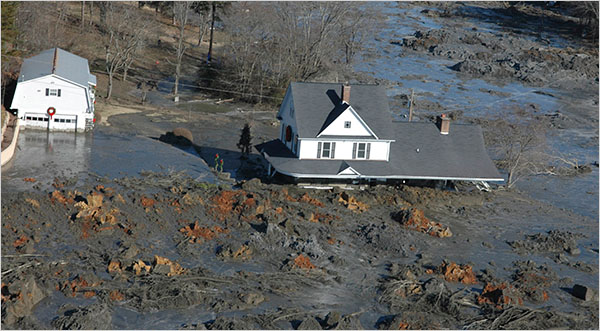I was outraged when I heard Jim Rower’s response to Lesley Stahl’s question on 60 Minutes on Sunday, the 4th: “We shouldn’t get rid of coal,” said the power industry lobbyist. People like him don’t quite understand the risk caused by waste that results from burning coal, or they might just simply ignore it.
This is an issue that has not been addressed and covered much by the media ,which is disturbing when you know how much coal combustion waste impacts our lives. A 2007 report about the EPA’s Human and Ecological Risk Assessment of Coal Combustion Wastes, stresses the fact that waste from coal combustion such as fly ash, bottom ash, and slag do pose risks to human health.
For humans exposed via the groundwater-to drinking- water pathway, arsenic in CCW [coal combustion waste] landfills poses a 90th percentile cancer risk of 5×10-4 for unlined units and 2×10-4 for clay-lined units. The 50th percentile risks are 1×10-5 (unlined units) and 3×10-6(clay-lined units). Risks are higher for surface impoundments, with an arsenic cancer risk of 9×10-3 for unlined units and 3×10-3 for clay-lined units at the 90th percentile. At the 50th percentile, risks for unlined surface impoundments are 3×10-4, and clay-lined units show a risk of 9×10-5. Five additional constituents have 90th percentile noncancer risks above the criteria (HQs ranging from greater than 1 to 4) for unlined surface impoundments, including boron and cadmium, which have been cited in CCW damage cases, referenced above. Boron and molybdenum show HQs of 2 and 3 for clay-lined surface impoundments. None of these noncarcinogens show HQs above 1 at the 50th percentile for any unit type.
This is a risk and a struggle for a lot of people. As it shows in 60 Minutes, people who reside in water areas that are exposed to coal ash, they are advised to not swim or drink from the water. Also, those people are at higher risk of being wiped out by coal ash spills like the one of the Kingston Fossil Plant in Tennessee.

You might think that since many of us don’t live in such areas, it shouldn’t be our concern. But it should be because many companies, in order to spend less on coal waste disposal, recycle it. Coal waste is used in the manufacturing of carpets, cement, asphalt, tile, sinks and other, as some misleadingly call them, “green products”. All of these products put us in direct exposure to these toxics.
It is time to voice out our opinions against the usage of coal to produce energy. It poses major risks in many areas of the country, especially Texas that has 17 existing coal plants and 11 proposed or already under construction. People’s lives shouldn’t be jeopardized when we know we can use sources of energy that are cleaner and better for us and our environment.
Note: You can watch and comment on the Leslie Stahl’s 60 minutes piece by clicking at this link



